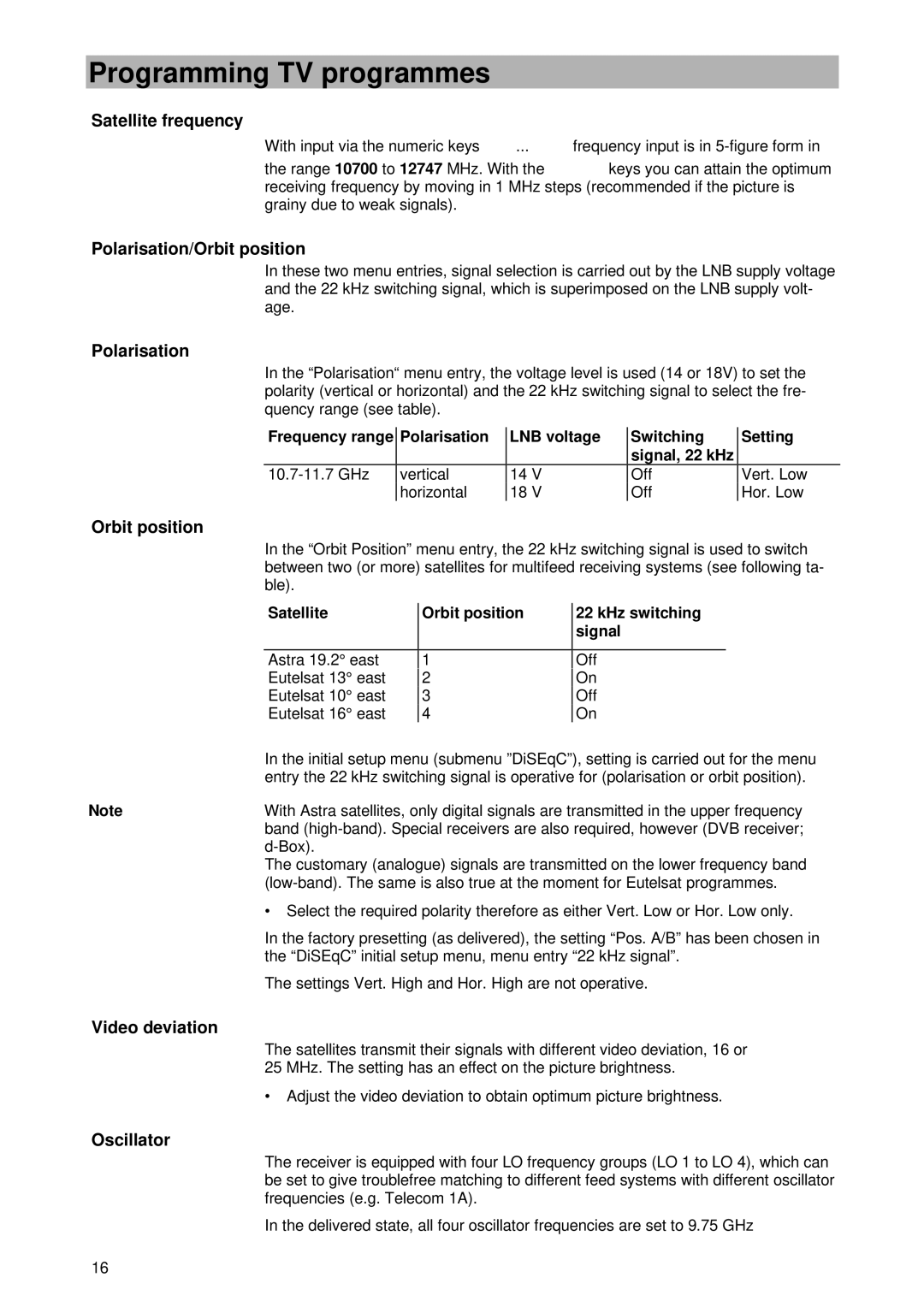Programming TV programmes
Satellite frequency
With input via the numeric keys![]() ...
...![]() frequency input is in
frequency input is in
the range 10700 to 12747 MHz. With the ![]() keys you can attain the optimum receiving frequency by moving in 1 MHz steps (recommended if the picture is grainy due to weak signals).
keys you can attain the optimum receiving frequency by moving in 1 MHz steps (recommended if the picture is grainy due to weak signals).
Polarisation/Orbit position
In these two menu entries, signal selection is carried out by the LNB supply voltage and the 22 kHz switching signal, which is superimposed on the LNB supply volt- age.
Polarisation
In the “Polarisation“ menu entry, the voltage level is used (14 or 18V) to set the polarity (vertical or horizontal) and the 22 kHz switching signal to select the fre- quency range (see table).
Frequency range | Polarisation | LNB voltage | Switching | Setting |
|
|
| signal, 22 kHz |
|
vertical | 14 V | Off | Vert. Low | |
| horizontal | 18 V | Off | Hor. Low |
Orbit position
In the “Orbit Position” menu entry, the 22 kHz switching signal is used to switch between two (or more) satellites for multifeed receiving systems (see following ta- ble).
| Satellite | Orbit position | 22 kHz switching | |
|
|
| signal | |
|
|
|
|
|
| Astra 19.2° east | 1 | Off | |
| Eutelsat 13° east | 2 | On | |
| Eutelsat 10° east | 3 | Off | |
| Eutelsat 16° east | 4 | On | |
| In the initial setup menu (submenu ”DiSEqC”), setting is carried out for the menu | |||
| entry the 22 kHz switching signal is operative for (polarisation or orbit position). | |||
Note | With Astra satellites, only digital signals are transmitted in the upper frequency | |||
| band | |||
|
|
|
| |
| The customary (analogue) signals are transmitted on the lower frequency band | |||
| ||||
∙Select the required polarity therefore as either Vert. Low or Hor. Low only.
In the factory presetting (as delivered), the setting “Pos. A/B” has been chosen in the “DiSEqC” initial setup menu, menu entry “22 kHz signal”.
The settings Vert. High and Hor. High are not operative.
Video deviation
The satellites transmit their signals with different video deviation, 16 or 25 MHz. The setting has an effect on the picture brightness.
∙Adjust the video deviation to obtain optimum picture brightness.
Oscillator
The receiver is equipped with four LO frequency groups (LO 1 to LO 4), which can be set to give troublefree matching to different feed systems with different oscillator frequencies (e.g. Telecom 1A).
In the delivered state, all four oscillator frequencies are set to 9.75 GHz
16
